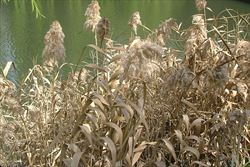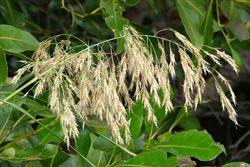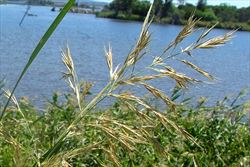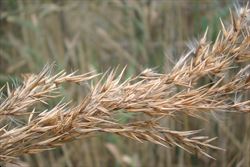Click on images to enlarge

dense natural population in a wetland in eastern Australia (Photo: Sheldon Navie)

habit in summer (Photo: Sheldon Navie)

habit in late winter (Photo: Sheldon Navie)

close-up of stem and bases of leaf blades (Photo: Sheldon Navie)

young seed-head (Photo: Sheldon Navie)

seed-head in flower (Photo: Sheldon Navie)

close-up of flower spikelets (Photo: Sheldon Navie)

mature seed-head (Photo: Sheldon Navie)

close-up of mature flower spikelets with seeds (Photo: Sheldon Navie)
Scientific Name
Phragmites australis (Cav.) Trin. ex Steud.
Synonyms
Arundo australis Cav.Arundo phragmites L.Arundo vulgaris Lam.Phragmites communis Trin.Phragmites vulgaris (Lam.) Crép.
Family
Gramineae (South Australia)Poaceae (Queensland, New South Wales, the ACT, Victoria, Tasmania, Western Australia and the Northern Territory)
Common Names
bamboo reed, cane grass, canegrass, common phragmites reed, common reed, common reedgrass, ditch reed, giant reed, giant reedgrass, native reed, phragmites, reed grass
Origin
The exact native range of common reed (Phragmites australis) is obscure, but it is considered to be native to large parts of the world and may even have the widest distribution of any flowering plant. It is thought to be native to Africa, Europe, northern and western Asia, North America, Central America, South America and most of northern and eastern Australia. In Australia, it is native to Queensland, New South Wales, the ACT, Victoria, Tasmania, eastern and northern South Australia and the southern and northern parts of the Northern Territory.
Naturalised Distribution
Naturalised in the coastal districts of south-western Western Australia.
Also naturalised in New Zealand, on several Pacific islands, and perhaps elsewhere.
Notes
Common reed (Phragmites australis) is regarded as an environmental weed in Western Australia.

